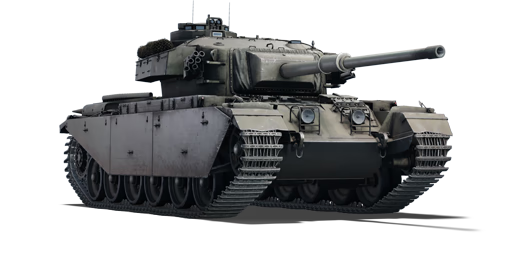



The Centurion Mk 10 was the tenth variant of the Centurion medium tank family. Every new Centurion manufactured starting from the Centurion Mk 5/2 variant was equipped with the 105 mm Royal Ordnance L7A1 tank gun. The 105 mm Royal Ordnance L7A1 tank gun, officially known as Gun, 105 mm, Tank, L7, was the most successful British tank gun. It was designed for use in armoured fighting vehicles and replaced the earlier 84 mm QF 20-pounder tank cannon fitted in British Centurion tank variants from the Mk 3 to Mk 5/1. This successful tank gun was installed on a variety of armoured vehicles, notably the Centurion (beginning with the Mk 5/2 variant), the German Army Leopard 1, and, in a modified form, the M68 cannon in numerous types of the U.S. Army's M48 Patton and M60 main battle tanks. Vickers created the Centurion Mk 10 in 1959. It was serially produced from 1960 to 1972. It is used by armies in the United Kingdom, South Africa, Egypt, Australia, Denmark, Israel, Canada, Iraq, India, Jordan, Kuwait, Lebanon, the Netherlands, Switzerland, and Sweden. It was used in battles in the Vietnam War in 1965, the Middle East in 1970, and the Iran-Iraq war in 1980.
Introduced in Update 1.55 "Royal Armour", the Centurion Mk 10 has increased firepower over earlier Centurion variants. As one of the first tanks to be equipped with the 105 mm Royal Ordnance L7A1 tank gun, it equips players with devastating firepower that will undoubtedly destroy any opponent's tanks. Ammunition options are limited to armour-piercing discarding sabot (APDS) or high explosive squash head (HESH) rounds. Nonetheless, with a staggering 350 mm of armour penetration for the primary anti-tank ammunition, the Centurion Mk 10 is capable of dealing with any foe on the battlefield. However, the mobility of all Centurions is below average, owing to the tank's enormous weight combined with a low horsepower engine. The playstyles are quite similar to the Centurion Mk 3, with nearly identical armour arrangement.
| Ammunition | Type | Armor penetration (mm) at a distance: | |||||
|---|---|---|---|---|---|---|---|
| 10 m | 100 m | 500 m | 1000 m | 1500 m | 2000 m | ||
| APDS | 350 | 347 | 333 | 317 | 302 | 287 | |
| HESH | 127 | 127 | 127 | 127 | 127 | 127 | |
| Belt | Belt filling | Armor penetration (mm) at a distance: | |||||
|---|---|---|---|---|---|---|---|
| 10 m | 100 m | 500 m | 1000 m | 1500 m | 2000 m | ||
| AP/T | 13 | 12 | 7 | 3 | 2 | 0 | |












Mobility | |
|---|---|
Protection |
|---|
Firepower | |
|---|---|